As outdoor folk, most of us care deeply about the places and environments we play in; so perhaps it's ironic that so much of the gear we use is made with synthetic materials derived from petrochemicals. To reduce the amount of virgin plastic and polyester we add to the world, and help save us from gradually filling the planet with cast-offs and pollution, recycling more of our existing stuff is one important step towards a more sustainable outdoor industry.
With a growing awareness of environmental issues, and the urgent need for greater sustainability, many brands are increasing their use of recycling. To highlight these efforts, here we're looking at a varied collection of products, each featuring a significant amount of recycled material. From footwear and clothing, to camping and even climbing, recycling is more and more becoming a feature to look out for across many product categories. How much further might the industry be able to go in future?
Overall Summary
| Make and model | |
|---|---|
|
Rab Price: £290 All-round shell with impressive eco-credentials, from recycled fabrics to Gore's new ePE membrane |
|
|
Silva Terra Headtorch and Terra Compass Price: £34.99 - £66.99 Lighting and compasses made with recycled plastic and hemp - seems like a bright idea |
|
|
Montane Price: £20 - £50 Fully-recycled baselayer range with a pong-beating treatment that reduces the need for frequent washing |
|
|
Scarpa Price: £245 Solid and supportive boots that tread a bit lighter on the planet |
|
|
EDELRID Price: £65 Reduce, re-use, recycle - a helmet built on the three Rs |
|
|
Berghaus Price: £170 Synthetic insulated layer that's lightweight, breathable and that bit more sustainable |
|
|
Mountain Equipment Price: £250 Recycled polyester is nothing new, but what about the down that goes inside? ME have it covered |
|
|
Red Chili Price: £100 Comfy beginner/all day shoe with a fully recycled (and superbly breathable) upper |
|
|
Rab Price: £170 - £190 Insulated mat range that's warm for the weight, and recycled inside and out |
|
|
Mountain Equipment Price: £70 - £90 Versatile lightweight fleece, with less impact |
Rab Namche Gore-Tex Jacket £290
The Namche takes a number of big steps towards greater sustainability, and as such it's a bit of a star in this review. Let's hope this is the shape of outdoor clothing to come!
Both the face fabric and backer of its 3-layer Gore-Tex are made from 100% recycled polyester, giving the Namche a 50% recycled content by total weight. As yet the membrane contains no recycled material, while the zips and trim are pretty low in it too; this is something Rab may work to improve. The fact that we have such a detailed and transparent breakdown from the brand is a major plus point for eco-minded users, and something of a new development in the outdoor industry (more on that later). So far, so very good.
Its tough-but-soft 75D fabric makes some use of solution-dying - a process that requires less energy and water than traditional fabric dying methods, without compromising performance. And there's more.
This is one of the new generation of shells to be made from Gore's fluorocarbon-free ePE fabric, an environmental advance that's been years in development. Traditional Gore-Tex is a synthetic material made with fluorocarbons. This stuff has a big environmental footprint during production, and its 'forever chemicals' don't break down in landfill, leaching into the environment and impacting the health of humans, wildlife and habitats worldwide.
The new kid on the block, ePE is being promoted as a more environmentally responsible solution. It's still petroleum-based, but the material is thinner, lighter, easier to break down, and crucially its DWR treatment is PFC-free. Performance-wise, how does the new fabric stack up? On paper the figures are good, with a hydrostatic head of 28,000mm and a breathability score of RET<13.

But how does that feel in real world use? We have with a number of ePE shells on review, and hope to have reached some broad end-user conclusions later this year.
Our initial experience of the Namche has been good, with one big but... While they're significantly less harmful, a drawback of PFC-free DWRs is that their effectiveness wanes faster. Like many new shells, the surface layer of the Namche GTX does seem prone to wetting out in prolonged rain, something that was apparent even after just a few uses. A saturated face will compromise a fabric's ability to breathe, so while it remains waterproof from the outside you may start to feel damp and clammy on the inside. Washing and re-proofing is essential, and we've found that you have to do it after every couple of uses in order to maintain the sort of performance we might have taken for granted with an old planet-killing fluorocarbon-laden shell. Even using an environmentally friendly product such as Nikwax or Grangers, the energy use of very many wash and reproof cycles over a garment's lifespan is at least an open question. However the key point - not filling the world with more PFCs - does represent a big advance.
Aside from its environmental credentials this is a very decent all-round shell, well suited to hillwalking if less so to climbing. Cut with plenty of length in the body for maximum weather protection, nicely articulated sleeves that mean little hem-lift when your arms are raised, and an easily-adjusted hood (with a bit of structure in the peak for windy weather, but without enough room to fit over a helmet), and with the addition of very roomy pockets and pit zips for venting on the go, it covers every key essential in an all-round shell. Men's and women's sizes available, too.
The full Namche Gore-Tex Jacket weighs 485g in size L, while a Paclite version comes in at a quoted 364g. If you're after an ultralight jacket, or one with the last word in breathability, then look elsewhere. But if you're looking for a midweight, mid-ranger, then the Namche is a solid choice at a fair price - and importantly it's one that has that bit less impact on the planet.
Along with many brands these days, Rab are keen to make their products more sustainable. For autumn/winter 2023 they are rolling out a new 'Material Facts' info service. This is available for every clothing product, giving a breakdown of recycled material content (by % weight), fluorocarbon status, and production location, with more criteria promised in the future. There's more info on all this here.
View websiteSilva Terra Headtorch and Terra Compass £34.99 - £66.99
Picture recycled outdoor gear and you may think first of clothing; gadgets, maybe less so. But that seems to be changing. Including parts made of something called REVO, a novel (to us at least) mix of recycled plastic and hemp fibres that has a promised 90% reduction in carbon emissions, Silva's Terra series applies the sustainability ethic to the unlikely fields of lighting and navigation.
The range so far is modest, including just the Terra Scout headtorch and the Terra Expedition and Terra Ranger compasses; but perhaps more will follow if these sell well.
Having reviewed the Terra Scout (£34.99 - £59.99) earlier this year, we were taken with its eco-friendly material, the clarity of light it produces, and the pleasing simplicity of operation (in a torch market that seems too often to go for fiddly complication). On the debit side, however, a so-so burn time and the crucial lack of a locking function do suggest this is more a torch for less-serious general use than something you'd bet your life on up mountains.
Bear in mind too that though the casing is recycled, the battery and electronics have not been advertised as more sustainable than any others - and these components aren't typically known for being light on the planet. Still, the effort to incorporate recycled material is a step in the right direction, and not something we've seen on other torches as yet, so perhaps Silva are lighting the way.
The chunky Terra Expedition (£66.99) features the REVO plastic/hemp mix on its lid and dial. This mirror sighting compass may be a bit specialist for walkers who are used to (and can get by perfectly well with) a simpler baseplate model, but if you're keen on absolute accuracy then it's easier, once you know how, to take a pinpoint bearing using a mirror compass if you're walking long legs between landmarks. Among other whistles and bells, the Terra Expedition includes a clinometer for measuring slope angle (useful for skiers and winter mountaineers), a lanyard with various scales printed on it for measuring wiggly routes on a map (useful for pretty much anyone); and a tiny inbuilt screw for adjusting the declination (useful in times and/or places where magnetic north and grid north are far enough apart for it to matter).
View websiteMontane Dart Range £20 - £50
Montane's Dart range offers the wicking performance of a decent technical baselayer with the added bonus of being made from 100% recycled polyester derived from old plastic bottles. Quick-drying and highly breathable, the Apex Eco fabric also has a smell-busting Polygiene treatment, so the impact on your pals is reduced along with your environmental footprint.
But what's the impact of the treatment itself? We asked Polygiene, and here's what they told us:
Polygiene is an antimicrobial technology that inhibits the growth of odour-causing bacteria, so garments need less washing which saves water and energy and reduces wear and tear on the garment. We realise that anything you do creates some kind of environmental footprint and so the key is to minimise the impact and provide a positive net end effect. Data shows that washing items half as much reduces the environmental impact by one third and per year this equates to a saving of 3,800 litres of water and 51KWH of energy.
To that we'd just say it depends how often you do the laundry!
With plenty for both genders, the range covers vest tops (for women), t-shirts, zipped tees, long sleeved options, boxers and leggings (for men) and even liner gloves. We've been using the Dart Lite, and the standard Dart T-shirt.
With its super-thin, airy, open-weave fabric the former is ideal for sweaty runs and hot weather walking. Since it comes in at only 100g in size L, we've also found it good for weight-conscious backpacking (and is there any other sort?).
For all-round use in more northerly climes though, the standard Dart is our pick. Whilst weighing barely more (116g size L) it's a thicker and more durable-feeling t-shirt, with a nice tailored cut that's well suited to hillwalking, scrambling and climbing. There may have been some modest fabric shrinkage since we began using it, but if so that's probably our fault for washing it too warm.
Montane has recently launched an initiative called Know What You're Buying. Featuring beside just under half of the AW23 collection, this provides customers with details about the origin of a product, third party accreditations and composition of the materials used. By 2025, Montane say, every item they sell will come with this information. To find out more see here
View websiteScarpa Mescalito TRK Planet GTX £245
Incorporating recycled materials in both the sole and the upper, Scarpa's new Planet range is an interesting development and may be something of a sign of things to come as the brand seeks to move towards greater sustainability. As yet the range includes only a running shoe, an approach shoe, and the walking boot we're looking at here, but perhaps more will follow if these go down well.
Designed, say Scarpa, for long hikes with a heavier pack, the Mescalito TRK Planet GTX is a supportive and protective boot that's well suited to backpacking on rough terrain, or tougher mountain walking below the snowline (be that Scotland or the Pyrenees). The stiffness of the sole lends itself well to edging too, so if you like a more solid high-cuff boot for scrambling then it would be well worth a look.
Coming in both a men's and a women's/lower volume version, this is a medium-to-wide-fitting boot with quite a broad toe, providing plenty of space for comfy walking and some room to accommodate a bit of foot spread over a long day.
The hard-wearing upper is made from a single of piece of recycled synthetic fabric (no seams to wear out), and lined with a 98%-recycled Gore-Tex membrane; and for extra longevity and protection there's plenty of rubber rand. Underfoot, the chunky Vibram Ecostep Evo compound sole contains 'up to' 30% recycled rubber, and because it's designed to be re-sole-able the boot has the potential to go on and on - another mark in its favour from an environmental point of view. This sole offers a decent tread for squishy ground, and a whole lot of support. In fact, while it's not officially a winter model it does feel stiff enough for at least occasional use with a walking crampon - this is not your typical bendy summer footwear.
With its rather hard and inflexible upper and comparatively stiff sole it's a chunky model, and by no means a lightweight (our pair of size 47 weighs 1640g - not far short of a traditional all-leather boot). It's taken a fair bit of breaking in, and while the feel has softened a fraction there's no getting away from the fact that it's also pretty warm. For users more accustomed to lightweight and breathable trail shoes the Mescalito TRK Planet might err towards overkill for summer use, but as the temperatures drop and the hills get wetter into autumn it is most definitely coming into its own.
View websiteEdelrid Zodiac 3R Helmet £65
Recycled clothing is one thing, safety-critical equipment perhaps quite another; but in recent times some manufacturers of climbing gear have begun, albeit for now on a small scale, to incorporate recycled synthetic materials in some product ranges. Hopefully more progress will be made in future. Edelrid are among the foremost, with their Zodiac 3R (Reduce, Reuse, Recycle) billed as the first part-recycled helmet on the market.
At first glance it appears to be just another take on the familiar hybrid design, but look under the hood and it's actually an impressive effort towards greater sustainability, incorporating a polyamide shell made 100% from ropes that would otherwise be offcuts left over from production, along with a fully-recycled EPS inner shell.
In other respects it's a very competent helmet, with an easy wheel-adjusted cradle, comfy (washable) padding, and a decent level of ventilation. For all-round, all-season use, from scrambling to cragging to mountaineering, this would be a sturdy and protective option. The one drawback is its weight. While the Zodiac 3R isn't exactly heavy in the way that helmets used to be, its 370g is undeniably hefty when compared with the many lightweight alternatives now available. A few tens of grams either way make quite a difference when worn on your head, and in Edelrid's own lineup this model is noticeably heavier in use than something like the 210g Salathe or the 178g Salathe Lite.
You may be adding some weight to your head, but you'll be treading lighter on the planet as you do so: perhaps it's a tradeoff worth considering.
View websiteBerghaus Mtn Guide MW Hybrid Jacket £170
The Mtn Guide Hybrid MW jacket makes decent strides in the recycling direction, with 76% total recycled content - that's classed by Berghaus as 'high', and we're inclined to agree it does seem very good for a synthetic insulated jacket. In addition, the product is PFA-free, and makes use of 94% Bluesign-approved fabrics. Furthermore, it meets the brand's 'Made Kinder' criteria, which helps ensure that gear is more responsibly made. And last, but by no means least, should it ever get damaged the jacket may be covered by the Repairhaus scheme, under which products can be sent for repair, for free. A solid set of green credentials, then.
Functioning equally well as an outer or a midlayer, depending on conditions, this lightweight jacket combines areas of insulated fill with panels of stretchy and breathable fleece. Zoned in the core areas of the body, upper arms and shoulders where warmth is most needed, the fluffy stuff is a light fill of 40gsm Primaloft Gold Active Plus, a top-end insulation designed to offer stretch and high levels of breathability for high-output use. Under the arms and in the small of the back it's Polartec Power Grid, to help prevent overheating on the move.
Synthetic insulated jackets often get sweaty when you're working hard, but the Mtn Guide Hybrid manages the perspiration problem far better than most. It's not hugely warm - we've been using it as our key insulating layer in summer, and would add more from about mid autumn onwards - but it's certainly snug for its low-ish weight (coming in around 480g size L).
The fit is fairly slim, which allows more for easier layering over the top than wearing it over lots of under-layers, and its short-ish length goes with its light-ish overall feel. Though we've found the cut a little restrictive at the elbow, the combination of stretch and underarm tailoring does mean minimal hem lift when your arms are raised, making this a good option for climbing or scrambling. And in a market that seems to want to put a hood on everything, it's nice here to have the low-bulk simplicity of a neck-covering but hood-free collar.
Features are fairly minimal. The two fair-sized hand pockets are positioned high enough for use with a harness or rucksack belt, while the inner pocket gives you somewhere warm to carry a phone (albeit the position is lower than we'd prefer). The stretch-bound hem and cuffs are simple, but we do think a bottom drawcord would have boosted the Mtn Guide Hybrid's outer layer ability, since without it the hem does tend to flap up in a high wind.
Not cheap; but overall a successful effort from Berghaus, which should work really well for a wide variety of mountain and climbing uses. The significant recycled content is really the icing on the cake.
View websiteMountain Equipment Classic Eco 300 Sleeping Bag £250
There's a lot of fabric in a sleeping bag, so if you're aiming to lighten your ecological tread then this would be a very good place to start. The eight-model (four men's, four women's) Classic Eco series aims to reduce environmental impact without seriously compromising on performance.
While not the last word in warmth-for-weight or super-alpine technicality, these down bags are well-specced for the all-round mountain user, whether that's backpacking or mountaineering. For this review the key thing is the impressive lengths to which Mountain Equipment have gone in their use of recycled materials - excluding only the zip and other small components. It's not just the polyester shell and polyamide inner that are 100% recycled (and fluorocarbon-free); the down inside it is recycled too. The feathery stuff is sourced through Mountain Equipment's Down Cycle project, through which post-consumer down is repurposed from old unwanted garments and duvets. This seems a really positive step, both from an environmental perspective and arguably in terms of animal welfare.
Here's ME's take on this:
"[U]nlike some other technical outdoor products, down-filled products can [...] be recycled very successfully - in fact up to 95% of a down garment or sleeping bag can usually be recycled in one way or another. Doing so prevents products needlessly being sent to landfill or incinerated and plays a big part in reducing the use of inputs associated with both virgin down and textiles."
We've been using the lightest bag in the series, the Classic Eco 300, which comes in at just 760g all-in. Filled with 267g of recycled down with a minimum content of 700 fill power, this one is ideal for summer and more clement bridge season weather in the UK hills, giving you a comfort rating of 5C (and a bit of leeway on that, we'd say). For winter or high mountain users, heavier models in the range will take you down to minus double figures.
With a relaxed but reasonably thermally efficient cut, a slanted box wall construction that makes best use of the fill's insulating properties, a nice anatomical hood, a full-length zip for easy venting, a snazzy magnetic top popper, a storage cube and a waterproof stuff sack, at a very fair £250 all-in, you're getting a lot of sleeping bag for your money with the Classic Eco 300. It feels made to last too, but perhaps if you did ever want to decommission it then it could be further recycled, giving you something approaching a closed loop - a holy grail of environmentally conscious production.
View websiteRed Chili Ventic Air Lace £100
Bringing a healthy measure of sustainability to the rock shoe world, the Ventic Air Lace boasts a synthetic upper in which all the textile components - fabric, laces, lace loops and pull-tabs - have been made entirely from post-consumer recycled polyester. These elements have been produced in accordance with the Global Recycled Standard, which aims to hold manufacturers to high social and environmental standards. Inside there's a hemp-based footbed. In fact the only part lacking a high degree of sustainability is the rubber used in the sole and rand.
A lace-up shoe with a middle-of-the-road width and volume, and a toe profile that's neither notably pointy nor obviously broad and square, the Ventic Air Lace should suit a good range of foot types - the chief limitation being that the laces do not extend far down the toe to enable a fine-tuned front-end fit (something that we do find annoying). Its neutral symmetry and flat sole prioritise comfort over outright performance, making this a good model for beginners, lower-grade multi-pitch days, and long indoor training sessions where you might not want to be removing your shoes between every route or problem.
While Red Chili recommend fitting in your standard shoe size, we dropped half a size to preserve a degree of precision in the toe - and still find them pretty forgiving on the foot. There's not much sensitivity, but this medium-stiff shoe does offer a useful balance of edging and smearing performance, making it a jack-of-all-trades in a modest sort of way. We certainly wouldn't save them for best, but for getting lots of low-grade mileage in comfort they've proved ideal. With a durable feel, and an impressive degree of breathability for use in warmer conditions, the knitted upper seems fantastic, and on the strength of this perhaps Red Chili may consider rolling out the recycled content to more models in future.
View websiteRab Ionosphere Sleeping Mat £170 - £190
Rab may be latecomers to the camping mat world, but their extensive new range of inflatable mats suggests they've given the matter a lot of thought. These are serious contenders that stack up against more familiar high-end brands.
Over the summer we looked in depth at the Ionosphere 5.5. This is top of the range in terms of warmth, and comes with a respectably low weight and pack size for its performance, making it ideal for mountaineering and alpine trips as well as 4-season backpacking.
Very warm for its weight, thanks - in part - to its heat-reflective TILT lining; comparatively quiet in use; deep enough to ride comfortably over uneven ground; and with vertically-aligned baffles that help keep you well-centred on the mat, it's got a lot going for it.
Of course our current remit is what it's made from - and on this score Rab do not disappoint. We're talking a 20D recycled Polyester outer fabric with a fluorocarbon-free DWR, plus 200gsm of 100% recycled polyester insulation. Overall, that's a lot of virgin material NOT added to the planet. Combine an Ionosphere mat with the ME sleeping bag above and you'd have an almost entirely recycled sleep system.
View websiteMountain Equipment Lumiko £70 - £90
A lightweight and versatile thin fleece top, the Lumiko can double as a highly breathable midlayer in a colder weather layering system, or a stand-alone outer in more summery conditions.
For the purposes of this review we're looking first at the recycled content; and with 93% recycled Polyester and 7% non-recycled Elastane, the fabric used in the Lumiko can hold its head up on that score. It does seem to be the stretchy stuff like Elastane, and components such as zips, that can't yet be made from recycled material.
Three versions are available, each in men's and women's fit: a full zip hoody; and a half-zip either hooded or hoodless. We've been using the full zip, and though some will prefer not to have a hood on every layer, there will of course be people who find it useful. It's a nice simple design, which features a single zipped chest pocket and not much else.
With a close, athletic cut, the Lumiko is ideal for climbing - officially what it's designed for - but equally good for hillwalkers and backpackers, or indeed anyone after something light (the hoody weighs 262g size L), moderately warm, quick-drying and breathable. On some people it may come a little short in the trunk, and as a result we've found the hem has a tendency to ride up unless held in place by a harness or rucksack hip belt; but since we're all built to different proportions that won't be the case for everyone, and you'll need to try it on for yourself.
In use it's great. The thin fabric feels open and airy for maximum air flow, while its brushed inner offers a modest degree of insulation. It's super-stretchy too, which helps with free movement.
View website

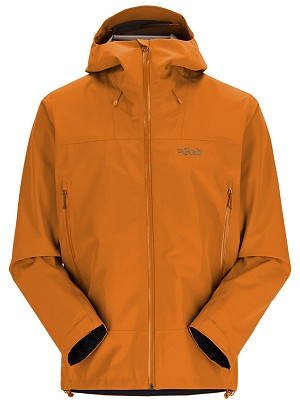
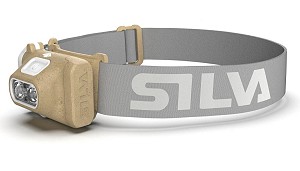
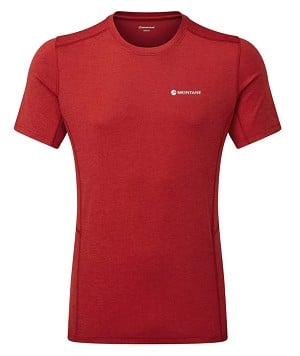
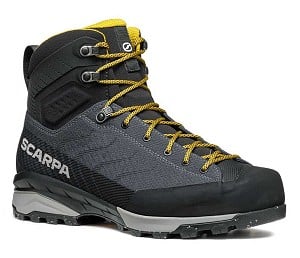
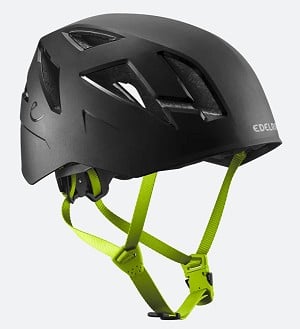
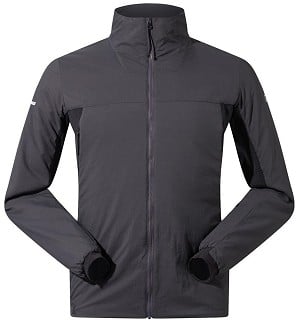
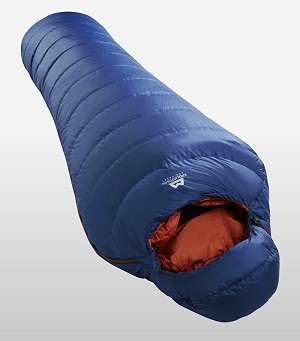
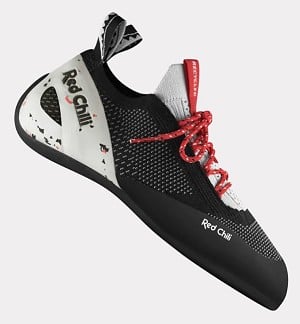
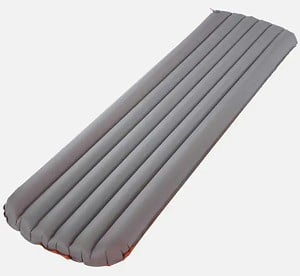
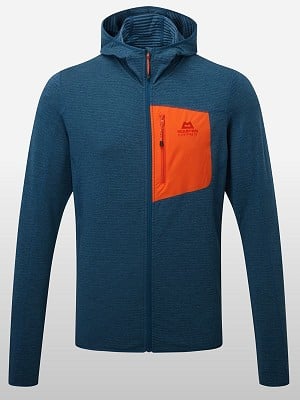






















Comments
My other main sport is running and i see On Running have a fully recyclable shoe (which they will recycle into more shoes) but available only on subscription of about 30 euro per month. Too much for me.
regarding the higher recycled material ratios achieved in the garment materials vs in the haberdashery like zippers, i wonder whether that’s due to the materials being functionally quite specific, and thus likely to be produced either in-house or by a manufacturer specialising in outdoor apparel materials.
zippers, i’d imagine to be bought in from a manufacturer like ykk, who has a much wider scope of sectors to sell into, and consequently may not feel the push for more recycled materials as much as a smaller outdoors-specific manufacturer.